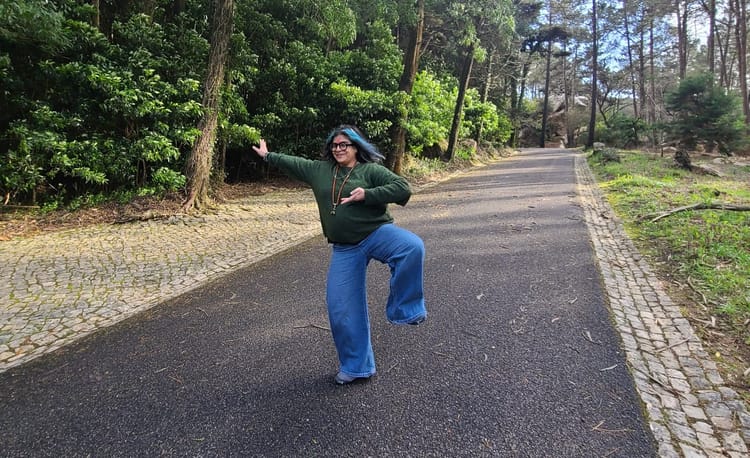Dharma meets an eating disorder

Note: Name and identifiable details have been changed to preserve confidentiality. This post is being shared as inspiration for others. It is the summary of a single session with a long-term client who seeks therapy sporadically.
I saw Rachael* after four months. She looked beautiful and well put together. Radiant, even. It took me by surprise when she stated simply that she had not been eating for days at a time. And when she did, she would make herself throw up. I thanked her for sharing and asked her if this was the first time she was experiencing this. She said no. She had a bout last year too, while she had been coming to therapy more frequently as she was going through a breakup. She apologized to me for not sharing. I said it was okay, and that I understood. I meant it.
Rachael is a young 20-something woman whose mother fled a war-torn country when her children were young. Unfortunately, her mother never had the opportunity to heal and has passed on her trauma to her children.
In the months since I saw her, she has been going through many challenges financially as she has had one terrible work situation after another. She moved in with her mother to save money and all hell broke loose. It has been better since she moved back into her apartment; her anxiety has reduced, but her eating has not improved. Rachael admitted that her friends had commented on her yo-yoing weight and she had either minimized it or responded with anger. To me, she said, “This cannot be sustained.”
I commended her for showing up and admitting there was an issue. We drew parallels in the different phases when she experienced flare-ups and she saw the connection: she lacked a sense of control. I asked her how not eating helped and she replied, “It helps me because I feel like I have my own back. When I eat, I feel like I am letting myself down; I am crossing a boundary.” She went on to say that she knows this is misplaced and wrong, that eating is essential.
We proceeded to explore that part that felt strong and capable when she did not eat. When asked how old that part of her might be, she said, “She’s 35. She has a job and her life together.” Rachael is at least a decade younger than that. Usually, parts are younger than a person’s current age and appear during challenging situations, and remain frozen in time. My rule is to never argue or challenge, rather to be curious about the parts’ origin stories. I asked her to do a floatback and see if she could identify the first time she felt this part. She was immediate in her response. “I know exactly the day and time this part was born.” She narrated a heartbreaking incident. Her mother and she’d had a fight and her mother ended up in the hospital. Her mother blamed her for it. These sorts of interactions with her mother come up repeatedly - the demand for my client to do more for her family, or receive blame for everything that is wrong. Each time, it does, I hold my client’s heartbreak and responsibility. I am aware of the resilient Black woman tropes. I am conscious of the cultural expectations. I understand the difficulty in saying no and the pressure to keep up.
Rachael went on to say that perhaps the 35-year-old part was more a 16-year-old with the load of a 35-year-old. The jarring disparity between what was being asked of this young woman and what she could manage hung unsaid but apparent between us.
Something I tell all my clients, and myself, with regard to familial expectations and cultural norms: You are doing this as much for yourself as every person in your lineage, especially your parent(s). They never had a chance to say no. They did what they needed to or could manage. Now it is our turn. But our turn to shoulder much more than trauma. It is our turn to shoulder the healing. This is what we are adding to our lineage.
This has helped me to make different choices. This has helped clients rest, or take the road less travelled. In Rachael’s case, it led her to conclude that a child is not responsible for what happens to a parent owing to their limited resources and capacities…that is sad…but ultimately not the child’s fault.
We moved to resourcing. Looking at the eating situation from other points of view, for instance, a mentor they love, or a friend they trust. The answer becomes evident: not eating is not a sign of growth or resilience, rather it is detrimental to the function of the individual. While Rachael knew this cognitively, doing it as a resource meditation and receiving it from her inner circle, allowed her to shake the faulty internalized belief. We used bilateral stimulation to seek permission, reassurance and validation from these other points of view - the resource figures. Rachael reported that the constriction in her chest had dissipated.
Resourcing in the Dharma is evident in the refuge practice. Each sit begins by seeking refuge and support from Buddhas or enlightened beings, the Dharma which includes wisdom texts, practices, rituals, philosophies and the Sangha, or communities/people that keep us committed and steadfast while creating a safe atmosphere for us to thrive. In therapies like EMDR and Brainspotting, we include bilateral stimulation which stimulates both hemispheres of the brain known to soothe the nervous system and enhance access to positive images, thoughts, emotions, and body sensations. As we completed this process, Rachael remarked that this technique works for her and she has used it extensively over the last months when she has not been able to come to therapy. She proudly beamed that she has shared this technique with all her friends and they are all “passionate tappers”. I congratulated her on using what she had learned and teaching it to others which strengthens the information within oneself. I could see that she was stepping into her power, poised with confidence and conviction.
We were ready to move to eating itself which brings up uncomfortable sensations in her body. The recommendation is to do it with a food she likes or a neutral one that does not generate as much tension as others. Here is the mindfulness-based approach:
- Slow it down - allow oneself the space and time to be with whatever is happening
- Notice what is happening in the body - observe sensations, especially of tightness, sharpness, numbness, fluttering
- Connect with the breath - to notice and be with the natural respiration
- Ground with the Earth element - intentionally connect either the feet or back with the Earth and contemplate specific qualities like unconditional support, nourishment, love or anything else that resonates in the moment
- Generate gratitude for all the resources natural and human that were involved in bringing the food to the table - send loving kindness to all the links in the chain
- Acknowledge the effort one has put in to go through this process of healing and releasing good vibrations into the universe.
By the time the session ended, Rachael was hopeful and smiling. She had not thought it possible that in one session she would be able to go from not eating, to be willing to try, if not look forward to eating.
I will share with you what I told her, “Every activity of our daily life when done with intention has the capacity to take us closer to our complete liberation.”
It is not about the end goal. I do not know if Rachael is “cured,” of her symptoms, what I am confident about is that her process is underway. It is about learning to be with the process with the same qualities we desire in the end - peace, ease, and happiness. These qualities are the means and the end.
In psychotherapy, we have the lens of problems and solutions. The Dharma looks at the cause of suffering. Our struggles with control, desire, fear and ignorance. When we look at everything as an avenue for liberation, our struggles begin to recede. In psychotherapy, we give tools to clients. In the Dharma, we give clients the Path for life.


Member discussion